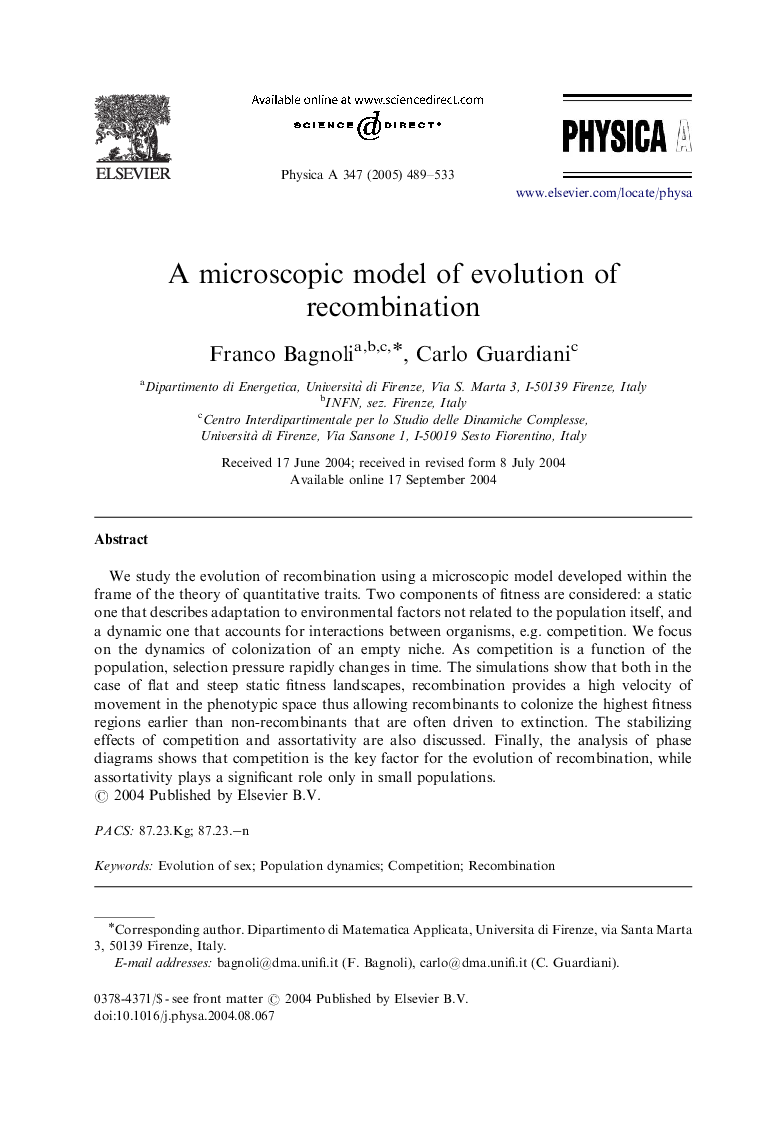| Article ID | Journal | Published Year | Pages | File Type |
|---|---|---|---|---|
| 9727975 | Physica A: Statistical Mechanics and its Applications | 2005 | 45 Pages |
Abstract
We study the evolution of recombination using a microscopic model developed within the frame of the theory of quantitative traits. Two components of fitness are considered: a static one that describes adaptation to environmental factors not related to the population itself, and a dynamic one that accounts for interactions between organisms, e.g. competition. We focus on the dynamics of colonization of an empty niche. As competition is a function of the population, selection pressure rapidly changes in time. The simulations show that both in the case of flat and steep static fitness landscapes, recombination provides a high velocity of movement in the phenotypic space thus allowing recombinants to colonize the highest fitness regions earlier than non-recombinants that are often driven to extinction. The stabilizing effects of competition and assortativity are also discussed. Finally, the analysis of phase diagrams shows that competition is the key factor for the evolution of recombination, while assortativity plays a significant role only in small populations.
Related Topics
Physical Sciences and Engineering
Mathematics
Mathematical Physics
Authors
Franco Bagnoli, Carlo Guardiani,
